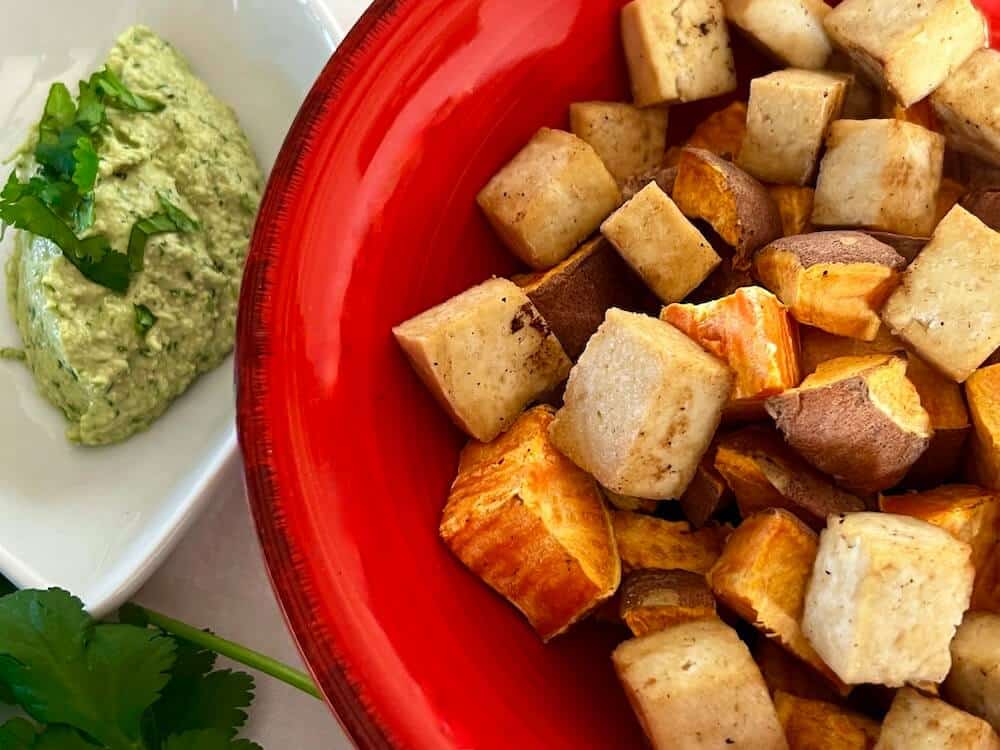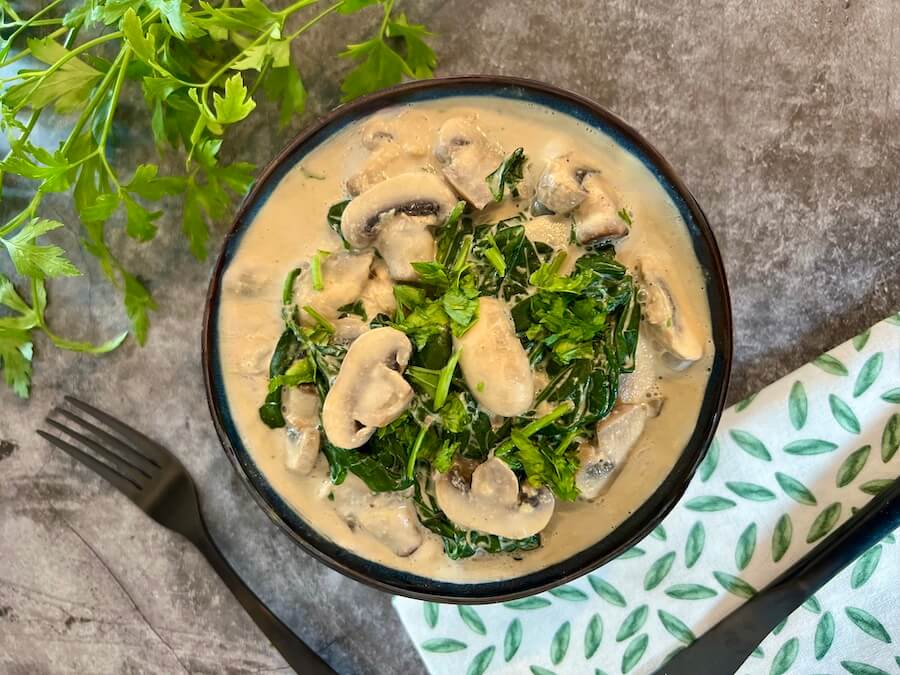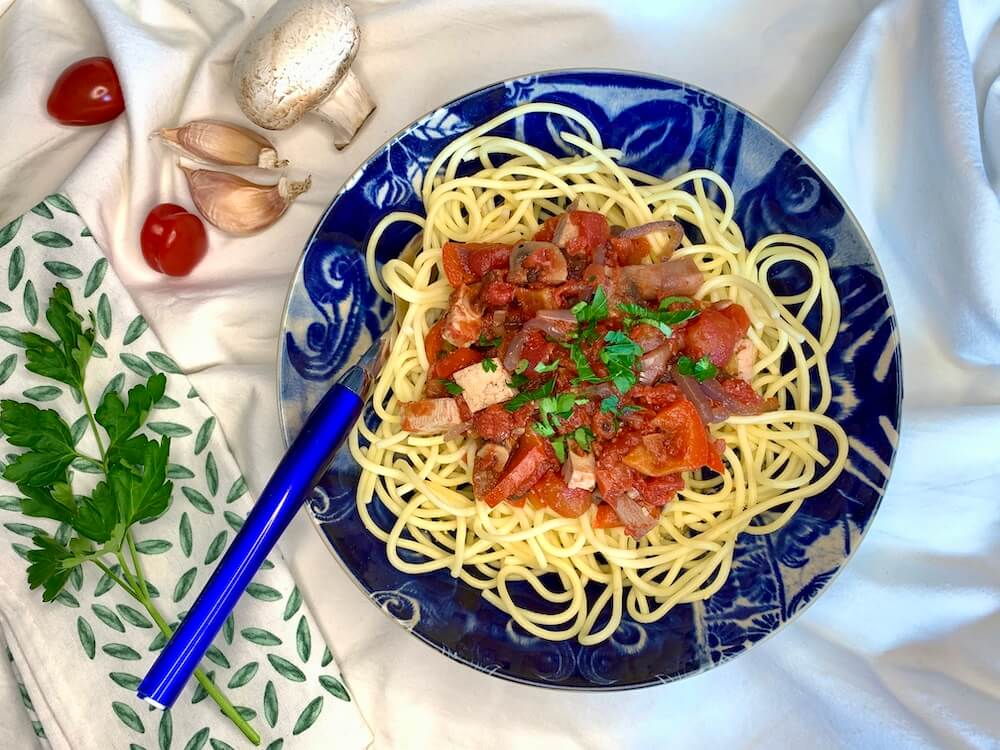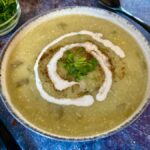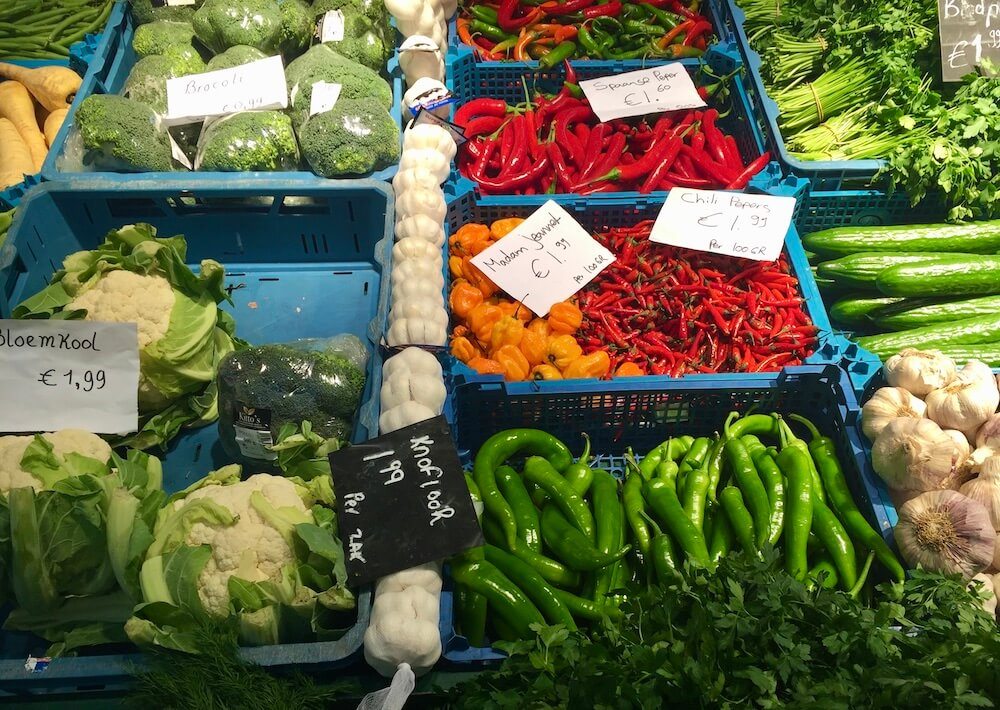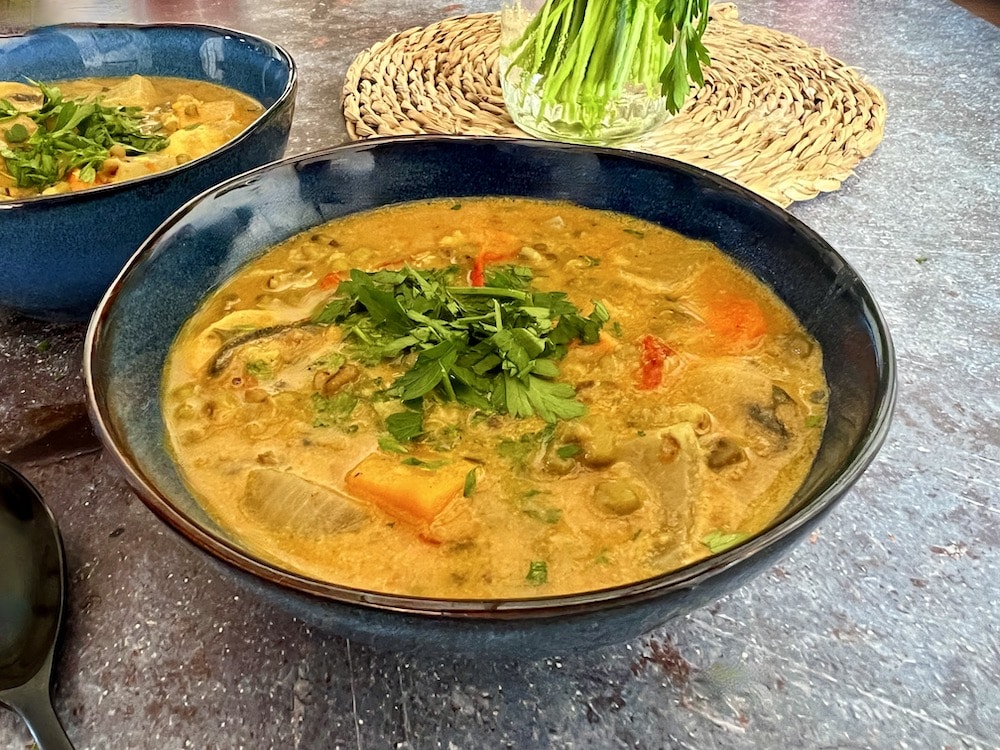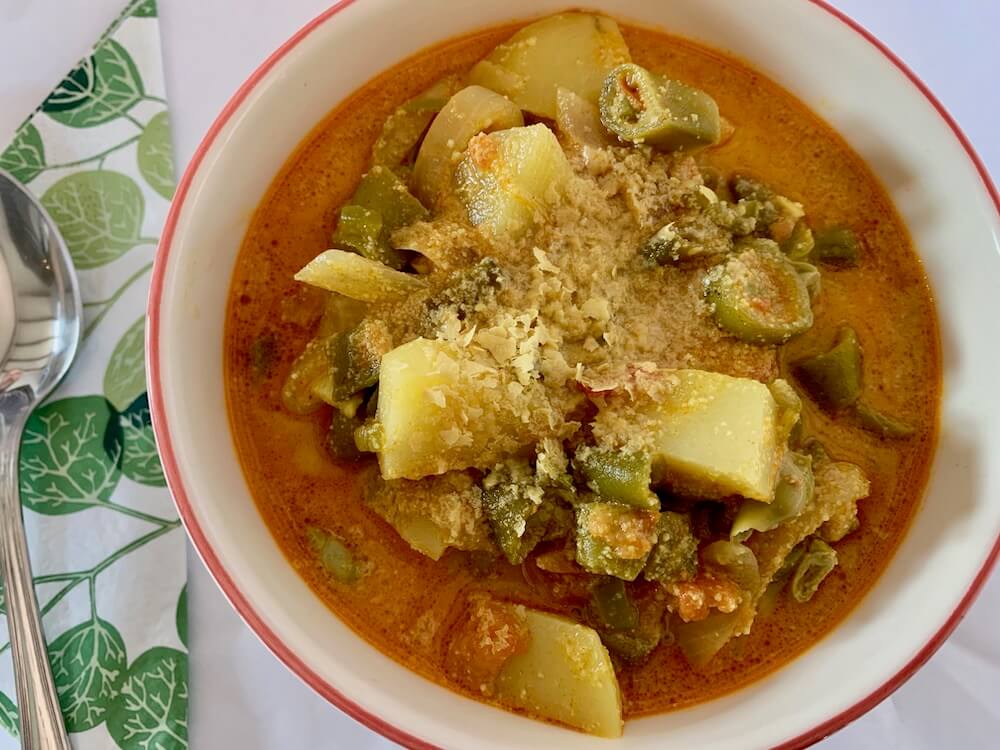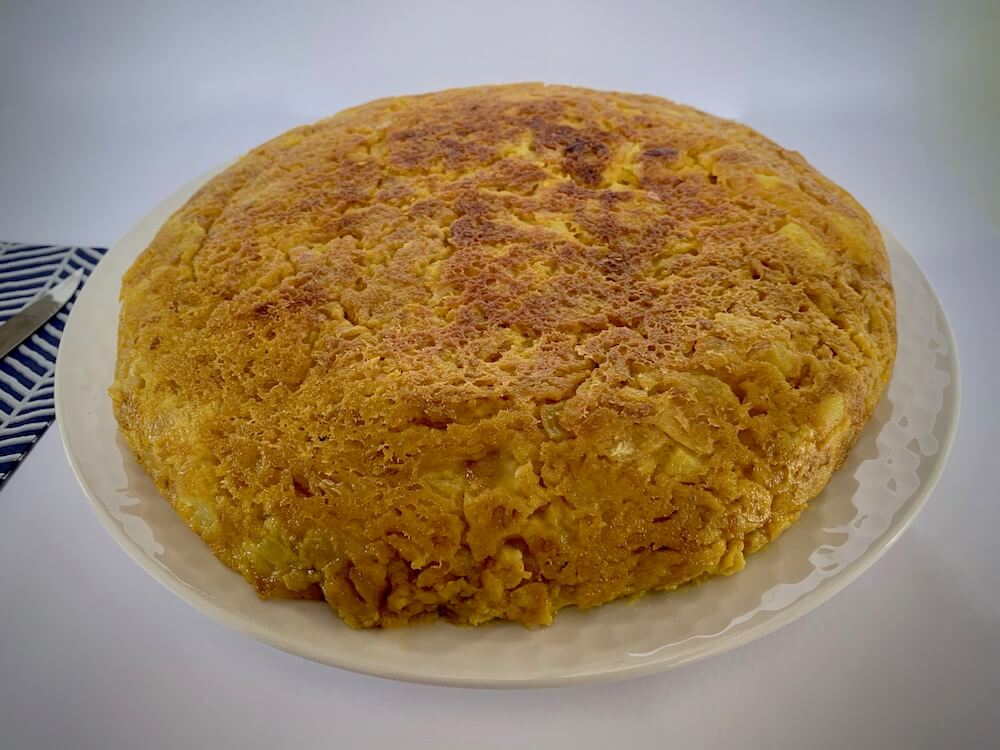When you first look into a whole foods plant based lifestyle without oil, you’ll probably ask yourself the question, ‘Can you use water instead of oil to fry?’ And like any good question, it has several answers.
Table of Contents
Why Oil is Used for Frying
Let’s get this out of the way first. Frying in water won’t be the same as frying in oil. Oil is used for frying because it can be heated to a much higher temperature than water.
When water hits 100ºc, it begins to boil and evaporate. It will stay at 100ºc no matter how much heat you throw at it and will continue to boil until it has completely evaporated away.
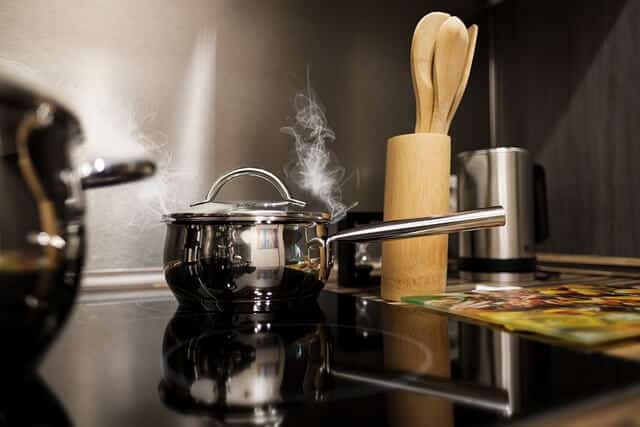
Different oils boil at different temperatures, but all of them boil at a much higher temperature than water. Olive oil for example has a boiling point of 300ºc.
Deep frying, which we all know is completely unhealthy for many reason, takes place at around 350ºc, and shallow frying between 175ºc – 190ºc.
Because the oil is higher than the evaporation point of water, the water which is on the exterior of the vegetable you’re frying will evaporate, drying out the outer part of the food and creating the crunchy exterior you expect from fried food.
If you use water instead of oil, the process is going to be different, so technically, I’m guessing it shouldn’t be called ‘frying’ if it’s done in water.
But for the purpose of usage as opposed to debating what it should be named, can you use water to fry?
And the answer is yes. With some caveats.
What Can You Fry Using Water Instead of Oil?
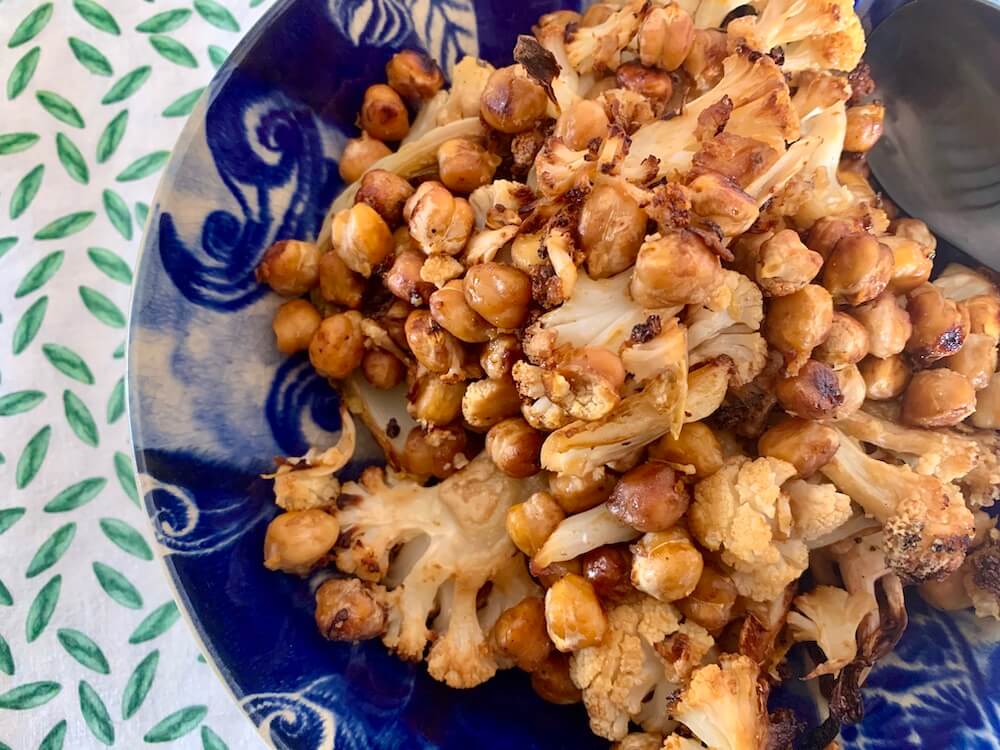
As we’ve already said, when you fry with water instead of oil, it might not be considered accurate to use the term ‘fry’, which is usually associated with higher temperatures than you can achieve with water.
You can use the term to water-sauté and this describes the process and the result pretty well if you ask me. But then again, if you ask me, you can also say ‘water fry‘, because what I’m interested in is replacing my old frying methods with new oil-free versions.
And I don’t really care if what we call it is accurate, as long as it tastes great!
In the future this might change, when the whole world realises the wonders of cooking without oil and it becomes common place to fry in water.
Then we’ll have the proper terminology for it lol.
You can water fry any vegetables you choose, though they will all have different characteristics and some are easier to get successful results with than others.
Most basic vegetables can be successfully water-fried. With harder veggies like carrots or artichokes, make sure to slice them thinly.
- Artichokes
- Asparagus
- Beans
- Broccoli
- Cabbage
- Carrots
- Cauliflower
- Eggplant
- Garlic
- Mushrooms
- Onions
- Peppers
- Potatoes* (more on these below)
- peas
- Sprouts
- Sweet potato
- Zucchini
How to Make a Stir Fry Using Water Instead of Oil
For a stir fry, heat your wok with about a third of a cup of water.
You don’t need to worry too exactly about the amount of water you use in the very beginning as long as you aren’t submerging the veggies in the water, because you’re going to evaporate the water off anyway.
Later on in the cooking process too much water will make the veggies soggy, so you’ll need to be very careful about how much you add.
But for the first moment, go ahead and add a little water to the pan and heat it up.
Next, I like to add the garlic and allow it a moment on its own. This is because I don’t like to get a piece of uncooked garlic in the final dish, so I like to make sure it comes into contact with the heat source.
After the garlic, add the onions and carrots if using because carrots are one of the harder vegetables which can stay harder than you want at the end, (though in a stir fry it’s not such a problem I guess).
At this stage, add any spices you’re using, like cumin, coriander, ginger powder etc.
Instead of stirring continuously, let the vegetables have contact with the hot pan for a few minutes, flipping only to make sure that they get turned over, and also to check the moisture level.
You don’t want the pan to be completely dry or it will burn, but at the same time, you do want it to be pretty dry so that the veggies can have the fried characteristics.
After the carrots and onions, add the rest of the vegetables to the pan and stir so that they get coated in the flavourings. I normally leave the mushrooms till last as they’re the softest of all the veggies and the quickest to cook.
The final part of the stir fry is to add some soy sauce for the last 5 minutes or so of cooking time.
With practice, you’ll find it simple to make a stir fry in water. Just the same as when you used to do it in oil.
Except now it’s without the grease and with all the full flavour of the veggies.
Can I Fry Onions in Water Instead of Oil for Making a Sauce Base?
Absolutely.
This is one of the places where frying in water really comes into its own.
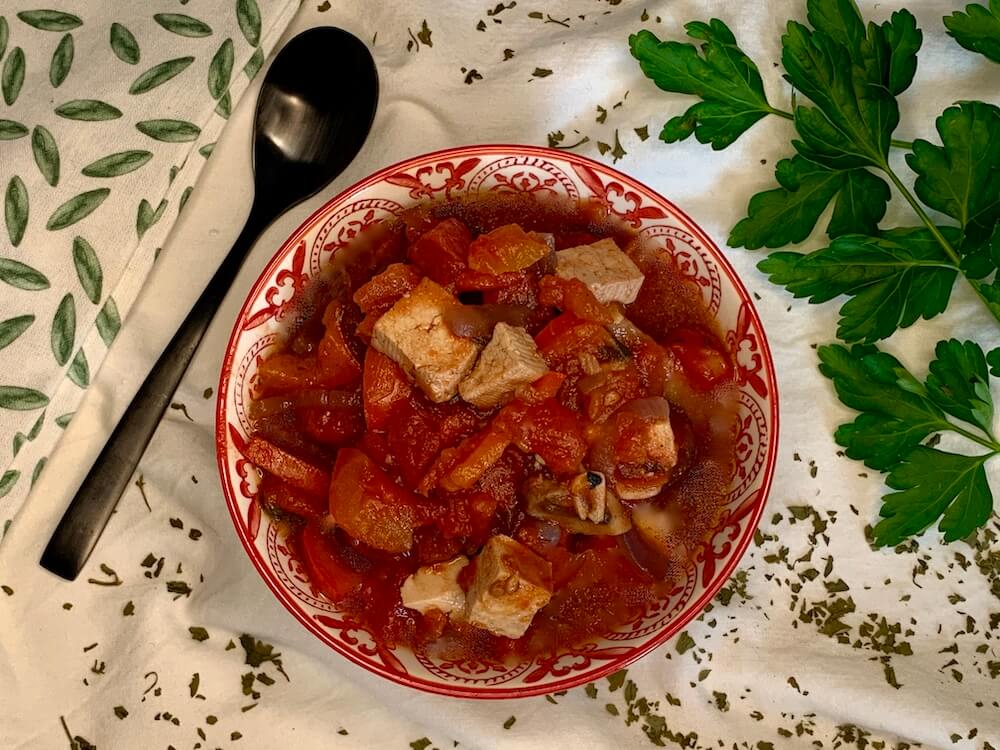
Just switch the oil for a third of a cup of water in the bottom of the pan.
Once the water’s hot, add the finely chopped and crushed garlic (I like to crush it before chopping to help bring out its flavour more).
If you’re using fresh ginger, use much less than you normally would and add it now, in very fine pieces. The flavour may be too strong if you’re not careful, so tread gently!
After a couple of minutes you can add the chopped onions and spices which you’re using for your sauce base.
Stir fry the onions just as you would normally but don’t leave them alone for too long or they might dry out and burn.
The onions will start to brown very soon, keep on going until you get them to the desired amount of softness before adding the other ingredients of your sauce.
You may like to see this homemade tomato sauce without oil
Additionally, you can make a creamy mushroom sauce for pasta by dry-frying the mushrooms without any oil.
Can I Fry Potatoes With Water Instead of Oil?
Potatoes are the worst of the vegetables for frying without oil as they just don’t retain their fried potato charm.
If I’m honest, I don’t cook with potato very often anymore and when I do, I’ll cook them in the air fryer, in the oven or in the microwave.
But I’ve included them here because I know they’re still a part of the process and it’s important to be able to cook them should you want to.
If you’re not bothered about potatoes, try switching them for sweet potatoes, which work much better without oil than potatoes.
How Can I Fry Potatoes Without Oil?
There are so many different ways to eat potatoes and all with a different flavour profile that you’ll need to treat each one separately.
It has to be said, potatoes are the one vegetable that you can’t make taste the same without oil, and which takes a little practice to get the hang of cooking differently.
But don’t despair, you can still enjoy your spuds.
Deep Fried Potatoes without Oil
You can’t replicate the flavour and crunchy profile of deep fried potatoes without oil, but the good news is that you can use the air fryer to get some pretty decent tasting fries, with none of the negative things that come from deep frying.
In this case it’s just a matter of getting used to a different way of eating your french fries.
And let’s be honest, who wants to be eating deep fried foods now that we know how bad it is for you?
Pan Fried Potatoes without Oil
If you’re used to cooking your chips in a pan with an inch or so of oil, you’ll also need to re-think your strategy. Unfortunately, you simply can’t replicate fried potatoes using water.
But you can make some pretty tasty alternative potatoes and brown them on the outside.
Bake the potatoes in the oven, or cook them on the stove top in a little water. Use a lid until the potatoes are halfway soft, then boil to reduce the water water away until it’s all completely evaporated.
Finally, let the potatoes brown on the edges by turning up the heat once there’s no more water in the pan.
I admit this is a completely different way to eat potatoes than the oil fried version.
It’s just something I think you get used to and no longer miss once you’ve got into the oil free way of life.
Shallow Fried Potatoes with Water
For shallow fried potatoes you can get good results using water but it might take a few practice runs before you’re satisfied with your results.
Potatoes seem to be the one vegetable that takes a little more effort when you remove oil from your life.
For shallow frying potatoes, chop your potatoes into small pieces, heat a 1/3 cup of water in the non-stick frying pan and add the potatoes once the water’s heated up.
Cook them in a tiny amount of liquid, just enough to stop them from sticking. Keep your eye on them so that they don’t dry out and burn.
When things start to become too dry, add a little more water at a time.
If you become impatient with this method because potatoes take quite a while to cook in this way, you may prefer to start with a little extra water to soften the initial potato and then let it become brown on the edges once the water has evaporated.
Best Way to Make CRISPY Potatoes Without Oil
You may have already guessed if you’ve read this far that potatoes aren’t my favourite vegetable to fry without oil because they get dry and a bit flavourless in my opinion.
So I’ve replaced the normal potato with sweet potato in my cooking and on those occasions when I fancy a normal potato, I want it to be truly crispy.
And for those occasions, one way to achieve the potato fix, is by cooking them in the oven.
Parboil the potatoes just like you would for traditional roasting and then bake them in the oven. Again, they’re not the same as oil roasted potatoes but they can be delicious.
Excellent recipe for cooking crispy potatoes without oil, from Alexandra Andersson.
What Else Can You Fry in Water along with Vegetables?
When frying in water, whether it’s for the base of a sauce, a stir fry or for part of another recipe, you can add other ingredients to the pan too.
Here are some of the foods which go well in a water fried stir fry.
- tofu
- lima beans or other beans
- cooked chickpeas
Do You Need to Cut Out Oil Completely?
Realistically at this moment in history, it won’t be easy to completely remove oil from your diet. Sure, you might be able to and maybe you even think it will be easy, but for most people eating out or eating with friends or family can make it impossible.
The important thing is to reduce the amount of cooked oil you eat and by changing your cooking habits it becomes not only easy, but you’ll end up preferring the taste too.
Oily food tastes greasy once you stop eating it.
So don’t beat yourself up if one day you have a meal at your sister’s house only to find she cooked the onions in olive oil.
It’s no big deal. It’s just unnecessary at home.
I hope you enjoy your oil free journey. It isn’t nearly as difficult at you might at first think!
